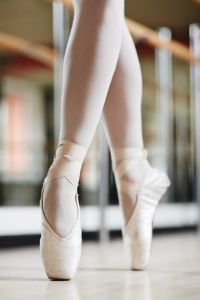
Ballet is an elegant and creative form of self-expression that takes practice, skill, and dedication. If your child is enrolled in ballet classes, you might be interested in learning about the roots of this art form together. The guide below explores the rich and interesting history of ballet.
How Did Ballet Originate?
The style of dance now known as ballet got its start during the Italian Renaissance. Developed as court entertainment in the 15th and 16th centuries, these routines were choreographed by dance masters and performed by aristocrats at lavish events, including weddings. The spectacle of elaborate costumes, music, and scenery were key.
How Did It Develop Over Time?
When Italian noblewoman Catherine de Medici married King Henry II of France, she introduced ballet to French court life. During the 17th century, King Louis XIV himself performed in many dances. His passion for ballet helped popularize the art form. This allowed him to open the Académie Royale de Musique, where the Paris Opera Ballet became the first professional ballet company. Ballet eventually transitioned from the court to the stage, first mixing with opera elements, then standing as an art form of its own.

As the dance spread throughout Europe, Russia became a driving cultural force in the evolution of ballet. Women dressed in bell-shaped skirts and dancing en pointe, or on toe, was becoming very fashionable. The light, delicate, and fairy-like dancing created a romantic image of ballet. Female ballerinas that stood as symbols of purity and goodness soon became the standard.
In the 20th century, a Russian theater troupe composed of the nation’s most talented dancers, choreographers, singers, composers, and stage designers began to tour Europe and the United States. The Ballet Russes introduced unique dance styles that would continue to inspire innovations. Swan Lake, The Nutcracker, and other ground-breaking classical pieces heavily emphasized technique. Dancers displayed precision with their point work, turn-outs, and high extensions. The classical tutu, shorter than the romantic variety, was developed to show the ballerinas’ legs and complicated footwork.
Contemporary Ballet
Today, ballet takes a mixed approach, combining classical forms with contemporary innovations. Dancers display rich emotions through choreography, costume, and skills that push the limits of audience expectations. Ballet classes and performances provide a refreshing blend of the traditional and the modern.
If your child is eager to contribute to the continuously evolving art of ballet, enroll them in dance lessons at Bethesda Conservatory of Dance. As the premier dance studio in Montgomery County, MD, their passionate and professional dance educators are dedicated to providing low-pressure, high-quality instruction. They welcome dancers ages 2 and up to choose from dance classes such as ballet, jazz, hip-hop, lyrical, and creative movement. For a list of class descriptions and additional information, visit their website. Call (301) 654-2200 today to enroll your child in ballet classes.
About the Business
Have a question? Ask the experts!
Send your question

